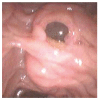Role of endoscopic retrograde cholangiopancreatography in acute pancreatitis
- PMID: 18081218
- PMCID: PMC4205448
- DOI: 10.3748/wjg.v13.i47.6314
Role of endoscopic retrograde cholangiopancreatography in acute pancreatitis
Abstract
Endoscopic retrograde cholangiopancreatography (ERCP) is a useful tool in the evaluation and management of acute pancreatitis. This review will focus on the role of ERCP in specific causes of acute pancreatitis, including microlithiasis and gallstone disease, pancreas divisum, Sphincter of Oddi dysfunction, tumors of the pancreaticobiliary tract, pancreatic pseudocysts, and pancreatic duct injury. Indications for endoscopic techniques such as biliary and pancreatic sphincterotomy, stenting, stricture dilation, treatment of duct leaks, drainage of fluid collections and stone extraction will also be discussed in this review. With the advent of less invasive and safer diagnostic modalities including endoscopic ultrasound (EUS) and magnetic retrograde cholangiopancreatography (MRCP), ERCP is appropriately becoming a therapeutic rather than diagnostic tool in the management of acute pancreatitis and its complications.
Figures




Similar articles
-
The Role of Endoscopic Retrograde Cholangiopancreatography in Management of Pancreatic Diseases.Gastroenterol Clin North Am. 2016 Mar;45(1):45-65. doi: 10.1016/j.gtc.2015.10.009. Gastroenterol Clin North Am. 2016. PMID: 26895680 Review.
-
ERCP in acute pancreatitis.Hepatobiliary Pancreat Dis Int. 2007 Jun;6(3):233-40. Hepatobiliary Pancreat Dis Int. 2007. PMID: 17548244 Review.
-
Endoscopic approach to acute pancreatitis.Rev Gastroenterol Disord. 2006 Summer;6(3):119-35. Rev Gastroenterol Disord. 2006. PMID: 16957653 Review.
-
Role of endoscopic ultrasonography in the diagnosis of acute and chronic pancreatitis.Gastrointest Endosc Clin N Am. 2013 Oct;23(4):735-47. doi: 10.1016/j.giec.2013.06.001. Epub 2013 Jul 10. Gastrointest Endosc Clin N Am. 2013. PMID: 24079787 Review.
-
The role of endoscopic retrograde cholangiopancreatography and endoscopic ultrasound in diagnosis and treatment of acute pancreatitis.Minerva Gastroenterol Dietol. 2005 Dec;51(4):265-88. Minerva Gastroenterol Dietol. 2005. PMID: 16282957 Review.
Cited by
-
Long-Term Safety of Endoscopic Biliary Stents for Cholangitis Complicating Choledocholithiasis: A Multi-Center Study.J Clin Med. 2020 Sep 12;9(9):2953. doi: 10.3390/jcm9092953. J Clin Med. 2020. PMID: 32932631 Free PMC article.
-
A Clinical Overview of Acute and Chronic Pancreatitis: The Medical and Surgical Management.Cureus. 2021 Nov 20;13(11):e19764. doi: 10.7759/cureus.19764. eCollection 2021 Nov. Cureus. 2021. PMID: 34938639 Free PMC article. Review.
-
Combination of serum gamma-glutamyltransferase and alkaline phosphatase in predicting the diagnosis of asymptomatic choledocholithiasis secondary to cholecystolithiasis.World J Clin Cases. 2019 Jan 26;7(2):137-144. doi: 10.12998/wjcc.v7.i2.137. World J Clin Cases. 2019. PMID: 30705891 Free PMC article.
-
Early intervention with rescue ERCP and pancreatic stenting for unanticipated post-ERCP pancreatitis: a comparative study.Ann Med. 2025 Dec;57(1):2527363. doi: 10.1080/07853890.2025.2527363. Epub 2025 Jul 4. Ann Med. 2025. PMID: 40611723 Free PMC article.
-
Management of severe acute pancreatitis in 2019.Transl Gastroenterol Hepatol. 2022 Apr 25;7:16. doi: 10.21037/tgh-2020-08. eCollection 2022. Transl Gastroenterol Hepatol. 2022. PMID: 35548476 Free PMC article. Review.
References
-
- Bradley EL. A clinically based classification system for acute pancreatitis. Summary of the International Symposium on Acute Pancreatitis, Atlanta, Ga, September 11 through 13, 1992. Arch Surg. 1993;128:586–590. - PubMed
-
- National Digestive Disease Information Clearinghouse. National Institute of Health 1976-2002
-
- Whitcomb DC. Clinical practice. Acute pancreatitis. N Engl J Med. 2006;354:2142–2150. - PubMed
-
- Lee SP, Nicholls JF, Park HZ. Biliary sludge as a cause of acute pancreatitis. N Engl J Med. 1992;326:589–593. - PubMed
Publication types
MeSH terms
LinkOut - more resources
Full Text Sources
Medical

